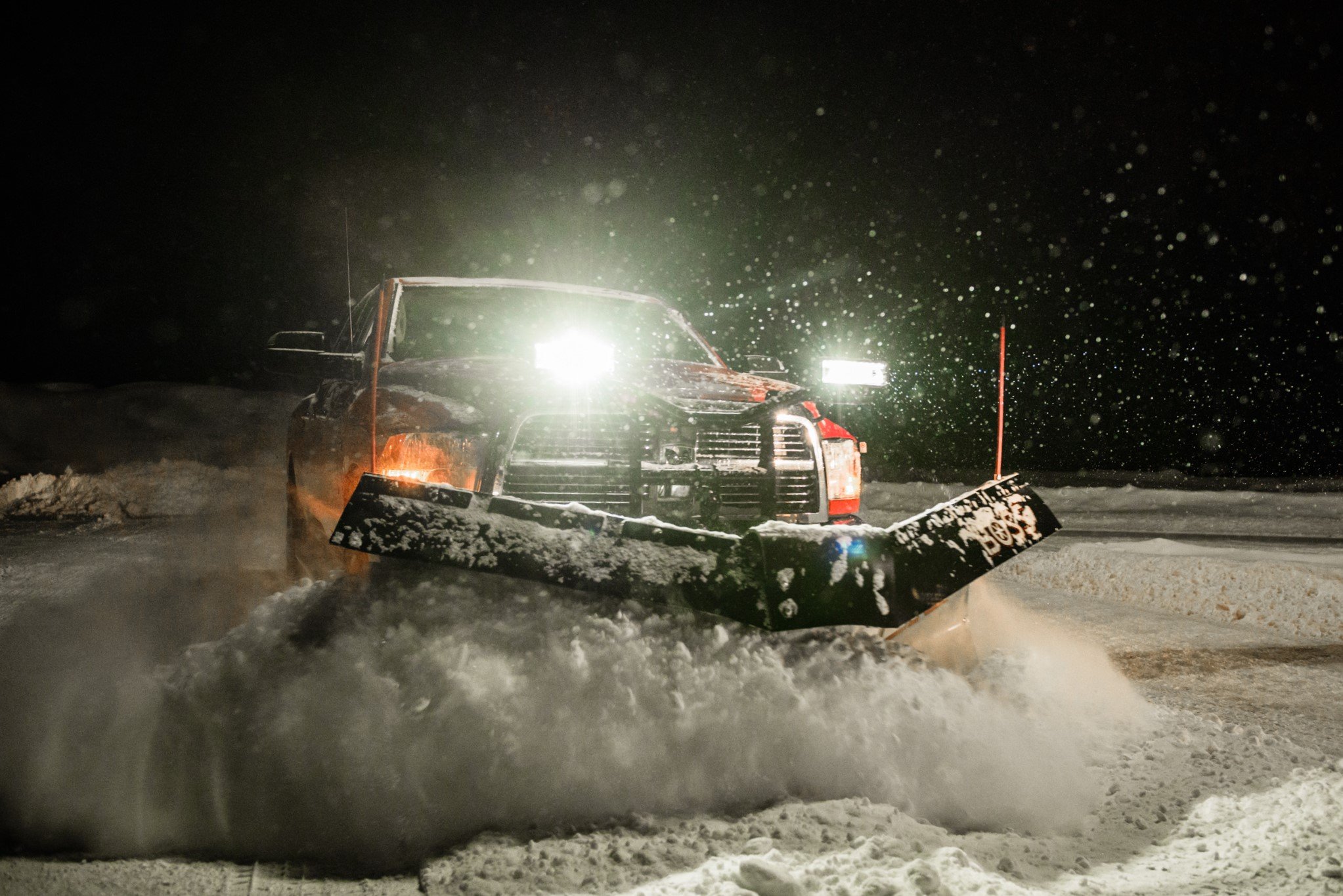
Eight Snowplowing Safety Tips
As the winter weather continues to fall, we know you’re eager to jump in the cab of your truck and restore order for your community. To keep you, your truck, your plow, and those around safe during the plowing season, remember these eight safety tips:
-
1. Inspect Your Vehicle
It is your responsibility to inspect your vehicle before plowing to ensure it is capable of the job. Below is a list of inspections to perform on your plow and truck:
-
Check that your tire pressure is adequate to ensure proper traction.
-
Inspect headlights on the vehicle and plow, as well as taillights and any other lights being operated.
-
Check for any signs of damage on your plow. This may include cracked welds or leaking hydraulics.
-
Review all connections between the truck and plow to make sure they are secure.
-
Inspect the cutting edge to check the wear point, ensuring it isn’t worn to the point where the main portion of the blade meets the ground.
-
Confirm the vehicles weight is balanced. Add weight to the bed of the truck if necessary.
2. Plow Transportation
When transporting your plow between jobs, it is important to understand how to position your blade. Always make sure to angle straight blades to the right and keep your V-blades in a retracted position. Make these adjustments before driving, reducing the chance of catching a curb or snowbank. Without blocking the headlights or your vision, keep the blade as far off the ground as possible. Always transport your plow at around 45 mph and under and never operate your plow while traveling between job sites. A good rule of thumb to prevent accidental operation while traveling is to power off plow controls.
3. While Plowing
Always wear your seat belt no matter where and when you are plowing. Obstacles hidden by the snow may cause your vehicle to suddenly stop. Safety is a number one priority. Make sure you know where to pile snow before beginning a job site. Never pile snow near fire hydrants, mailboxes, dumpsters, etc. When starting a pass, always begin moving your vehicle before dropping the blade. Never rely on your mirrors when moving in reverse. Turn around and look where you’re going. 14 mph should never be exceeded when plowing snow.
4. Look out for Hidden Objects
Before the snow plowing season, it is important to perform preseason site inspections. Being mindful of your surroundings and marking obstructions that will be hard to see before a storm. This will help to prevent damage to you, your vehicle, and the area being plowed. Read this blog to learn more about preseason site inspections.
5. Know your Surfaces
Be mindful of the surfaces you’re plowing and know when to raise or lower your plow shoes. When plowing dirt or gravel, lower the plow shoes. Doing this raises your blade so you don’t scrape away the surface you are plowing. When plowing asphalt or concrete, raise the plow shoes. Ensuring you will scrape as close to the surface as possible.
6. Avoid Overheating
When plowing a job site and transporting your plow, always check the temperature gauge of your vehicle. Overheating can be costly. If your vehicle overheats, stop and correct the problem. The height of your plow can sometimes prevent airflow to the radiator. If overheating occurs during transport, stop and adjust the position of your blade and continue to monitor your temperature gauge.
7. Beacon Warning Lights
To protect you and anyone around you from traffic collisions, always use a warning light. Bright flashing strobes and rotating beacon warning lights bring more visibility to oncoming traffic. Allowing vehicles time to make necessary lane changes or slow down when approaching. Click here to purchase a BOSS Beacon Warning Light.
8. Be Nice to the Hydraulics
When you’ve finished a job and have parked your vehicle, lower the blade to the ground and turn the plow control off for safety. Giving your plow a break and relieving the stress off the hydraulic components.


